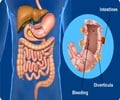Pediatricians can now identify infants who are at higher risk of early-childhood obesity, before obesity develops, using a simple measurement of BMI.

‘Infants who are at higher risk of early-childhood obesity can now be identified by using a simple measurement of body mass index (BMI).’





The researchers found that a high BMI, measured between six and 18 months of age, accurately predicted which infants were prone to early-childhood obesity. Children age two years or older are considered overweight if they have a BMI at or above the 85th percentile for their age and sex on standard growth charts, and are obese if their BMI is at the 95th percentile or higher. Although not typically done, infants' BMI can be tracked on World Health Organization (WHO) growth charts for birth to 24 months.
In this study, Smego and colleagues looked at the electronic health records for two groups of patients who had growth data from birth through age six years. One group of 480 children was severely obese between ages two and six years, with a BMI above the 99th percentile on the WHO growth charts, and the other group of 783 kids was lean, with a BMI between the 5th and 75th percentiles during those ages. Looking back at the growth curves over time, the researchers found that BMI diverged between the two groups starting at only four months of age.
A BMI above the 85th percentile at six, 12, or 18 months was a strong predictor of severe obesity by the age of six years, the investigators reported.
Most of the obese children were from low-income, African-American populations in Cincinnati, according to Smego. To validate their findings in a different ethnic and socioeconomic population, the researchers repeated the study in a third group: 2,649 children seen at Children's Hospital Colorado in Aurora, Colo., which had a higher Hispanic population. Smego said that a BMI threshold above the 85th percentile increased the chance of severe obesity at age 6 years by threefold to nine-fold in this group.
Advertisement
Source-Eurekalert















